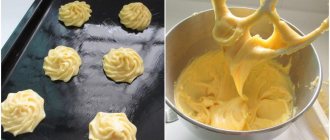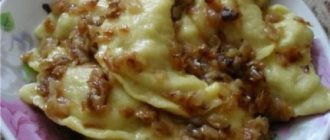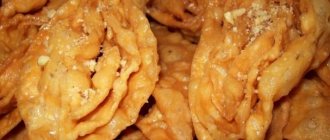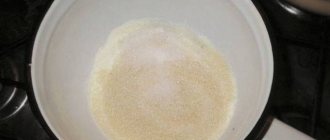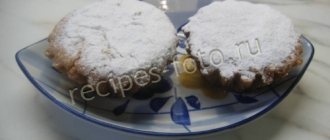Good afternoon friends! Today for you all the recipes for preparing the correct ideal choux pastry for eclairs - according to GOST, classic, with margarine and vegetable oil, and even left, without eggs. I am sure that each of us has tried and remained a fan of this French dessert. It doesn't matter if it was bought at the store and baked yourself.
There is no doubt that the French have long been trendsetters in world cuisine. True virtuosos in gastronomy, they are able to turn any dish into a work of art.
The history of eclairs dates back to 1533, when Catherine de Medici arrived in France, accompanied by her cook Panterolli. He opened the choux pastry.
The discovery of eclairs dates back to the 18th century, and they were invented by the famous chef Marie-Antoine Carême, who in France was nicknamed “the cook of kings and the king of cooks.” The famous culinary specialist worked at the court of George IV, Napoleon and Russian Emperor Alexander I. The cake did not gain enormous popularity immediately, only in the 19th century, and since then it has taken root in many countries that have long considered it theirs.
Translated, the word “éclair” means “lightning, flash.” Some explain this by the fact that tiny cakes were swept off the table with lightning speed, but they say that the name came from its shiny appearance.
Incredibly tasty, eclair, as befits a family with centuries-old traditions, has several varieties - in addition to the classic recipe, there are also “profiteroles” and “shu”. They all have a common cooking technology, but, nevertheless, are slightly different.
What they have in common is that they are essentially small buns, empty inside, and they are prepared with just flour, water, butter and flour. Evaporating moisture allows the product to have a durable shell. And the eggs help her stay intact. Eclairs are easily recognized by their elongated shape, ideally 14 cm long, and traditionally sweet filling. They are always covered with glaze on top.
Profiteroles are tiny buns, 2-3 cm in diameter, which are often served with soup or gravy instead of bread. They are filled with mushrooms and meat, but they can also be sweet. Their name comes from the French “profit” - profit. The fact is that there is little dough for profiteroles, but when they increase in size during the baking process, they visually look much more expensive.
Shu – round buns, up to 5 cm in diameter. There are a variety of fillings for buns - sweet and not so sweet. The difference from eclairs is that they cut off the top, put cream inside, and then cover this top, smearing it with cream.
